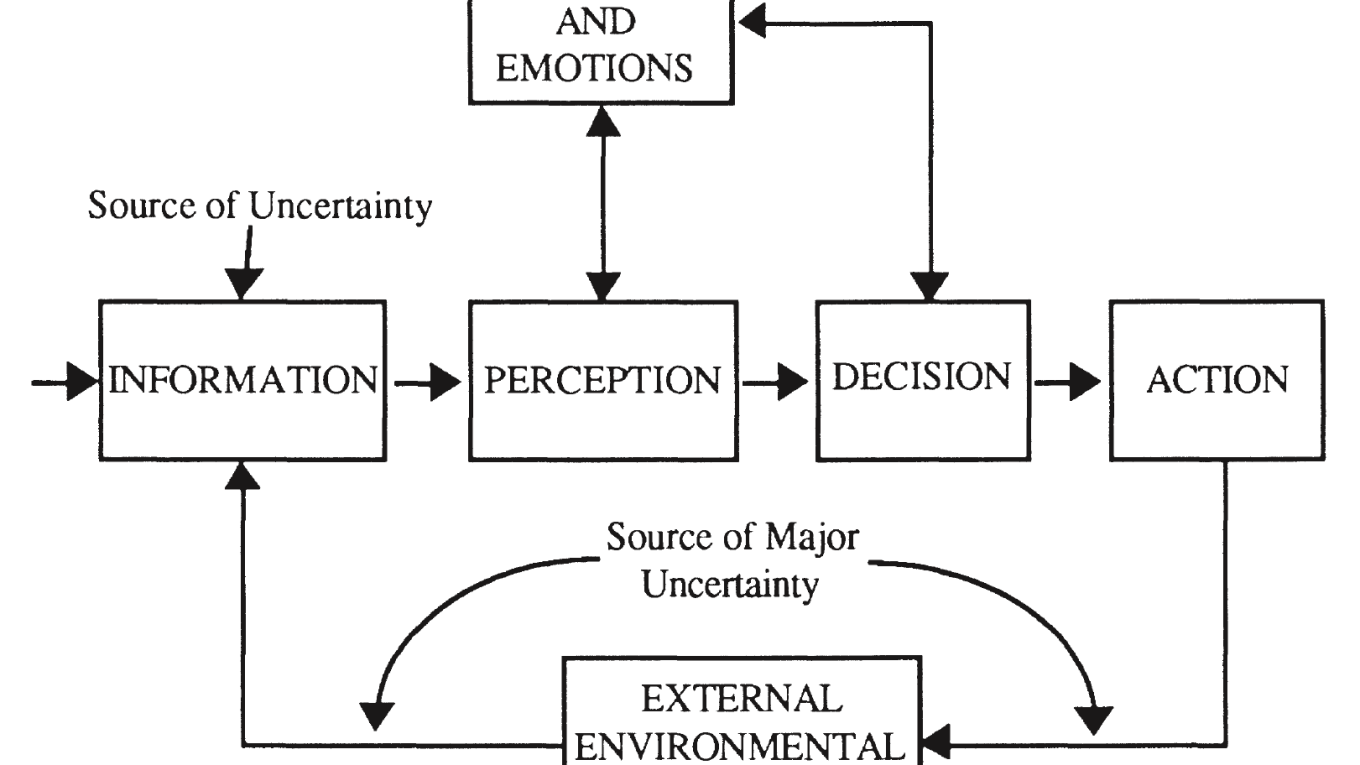001 Cognitive / emotional models of policymakers and decisionmakers
It is sometimes said that men are rational and women emotional, and that business is rational whereas concern for the natural environment is emotional. Most readers today would probably reject such oversimplified, generalized, and erroneous statements. As discussed earlier, except as an abstraction, there can be no purely rational person, model, policy, or decision. The detached, objective person who carefully evaluates the pros and cons of an issue, assesses and weighs the risks, and makes a rational choice among alternatives is a myth.
Figure 1.1 expands the familiar information-decision-action-feedback model. Note the interactions among the Feelings and Emotions, Perception, and Decision blocks. Note also that uncertainty characterizes not only information input as is recognized by the decision-analysis and decision-support schools. Even more important is consequences-of-action uncertainty, an area of study that has been poorly defined. For example, will an action lead to crossing a critical threshold, precipitating undesirable structural change?
The cognitive subsystem of a person is not independent of the emotional subsystem. At the level of physiology, the nervous, endocrine, immune, cardiovascular, and respiratory sub-subsystems mutually support and reinforce one another. At the level of individual psychology, cognition and emotion are inextricable aspects of personality. Both stem from the interaction of genetic, congenital, and postpartum forces. The personality of an adult is an outgrowth of the kinds of (including the lack of) interactions with parents, siblings, members of the extended family, schoolmates and playmates, nation(s), neighborhood(s), social- and natural-environment(s), races, cultures and religions, status or class, values, wealth, epoch of upbringing, sheer luck, and so on. Each person possesses various needs, and the dynamics of personality are shaped by the gratification or frustration of these needs and by conflict among needs. Personality has both conscious and unconscious (below the level of awareness) aspects. In the language of systems, the development of personality reflects many past bifurcation points.



